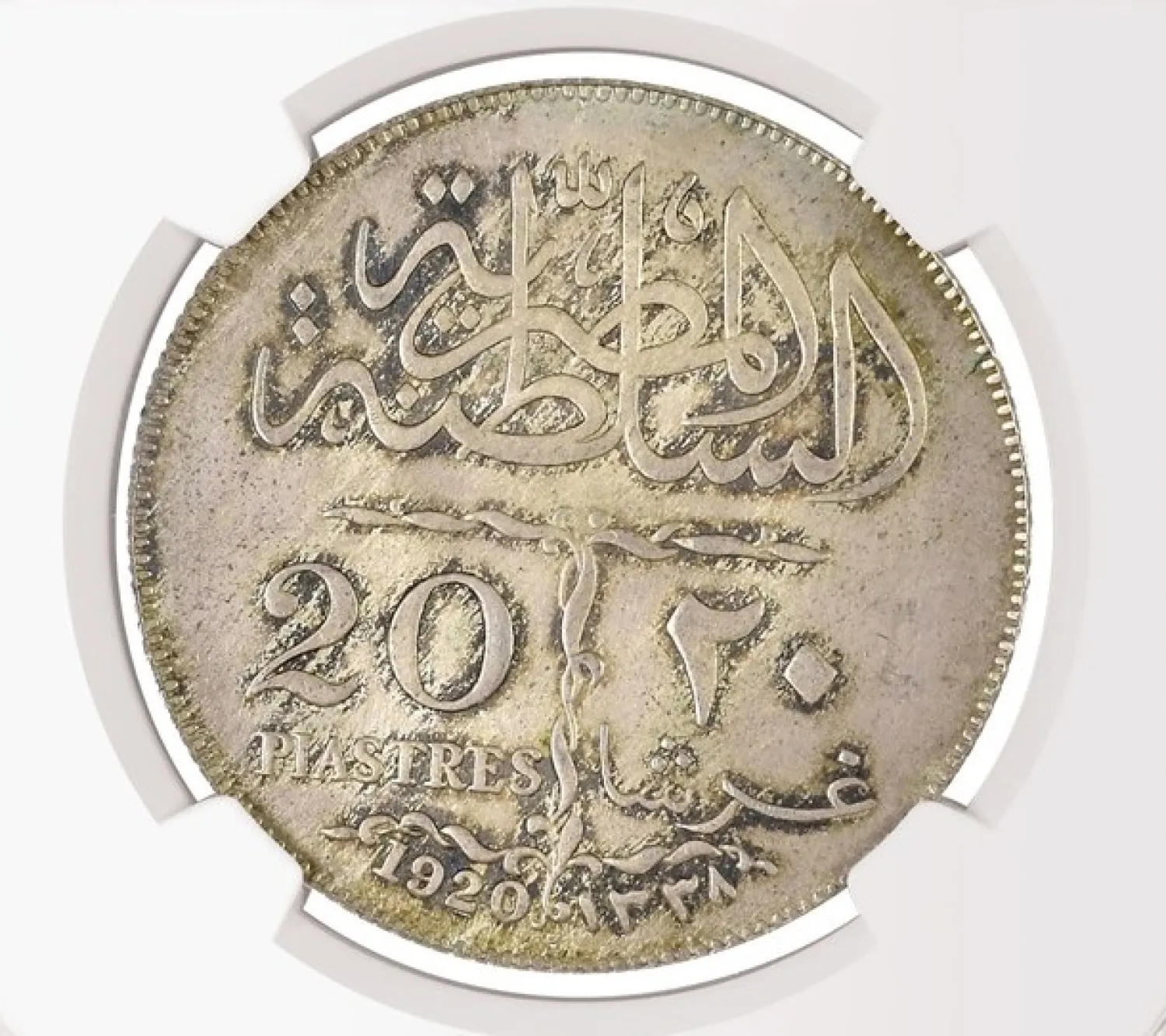The London-based Baldwin of St. James Auction House announced it has offered a rare Egyptian coin for auction in January 2018.
This coin, which belongs to the category of 20 piasters (riyal), is considered valuable because it dates back to 1920 AD (1338 AH), during the rule of Sultan Fuad. The currency is very rare, as only two pieces were made as samples to be approved by the Sultan.
However, the transition the country witnessed from the Sultanate to the Royal rule canceled its adoption, according to the Baldwin House.
One of the two rare coins is available in the Egyptian Currency House, while the other one is held by the Birmingham Coining Mint, (known as Heaton Mint at that time), and will be displayed at the Baldwin Global Auction Hall on January 14.
The coin’s price has been estimated at 40,000 to 60,000 sterling pounds.
Sultan Fuad ruled Egypt from 1917 to 1922 at a time when the country witnessed political turmoil. The coin is considered the largest of four other categories minted in 1920 in different quantities: 2, 5 and 10 piasters, and all of them were made of silver.
Commenting on the rare coin auctioning, Moheb Rizk, an Egyptian coin collector told Asharq Al-Awsat: "It is difficult to estimate the price of this coin because simply it has not been offered for sale at all. But, it definitely has a very important historical and monetary value for Egypt.”
He explained that the Egyptian government does not have the right to recover the piece because it does not own it, but, it can partake in the auction with a large budget to bid on the currency.
Due to the scarcity of the Sultani Riyal, forgers used to manufacture counterfeit copies of it, and sell them as original pieces.
The last attempt was in 1998, when an Italian came to an English coins house with a fake copy of the riyal, claiming that it is original. Tests however revealed that they were forgeries.









